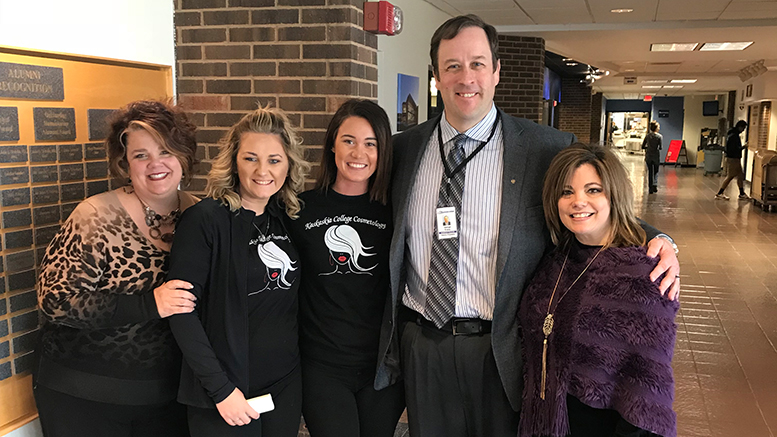State fiscal support for higher education has met sluggish growth recently, a trend that has community college leaders working to meet student needs despite a shrinking resource pool.
According to an annual report released in January by Grapevine, state financial aid for higher education increased just 1.6 percent between the 2017 and 2018 fiscal years. The lackluster upturn in funding is a nationwide issue, as a third of states decreased their higher education appropriations while another dozen increased their dollars allotted only slightly.
Although some states are impacted more than others, two-year institutions across the country are feeling the bite of lost funding, leading to painful reductions in programming and staff. Last year, Illinois broke out of a long-term budget freeze, even as community colleges there still confront the impasse’s lingering effects and the possibility of less aid compared to what they had in prior years.
This excerpt comes from the October/November issue of the Community College Journal, the award-winning magazine of the American Association of Community Colleges.
“Schools are reallocating resources back into their core educational missions,” says Matt Berry, deputy director for legislative and external affairs at the Illinois Community College Board (ICCB). “In some instances, they consolidated class offerings or reduced student support services they had provided previously. Even before the impasse, we had some colleges trimming budgets and being lean.”
Grim national picture aside, institution officials are determined to provide students with the supports they require while lobbying state lawmakers for extra resources.
“Advocating (for funding) means continuing to prove our worth,” says George Evans, president of Kaskaskia College in Centralia, Illinois. “People who are financially responsible come to community colleges because they’re going to get the same programmatic outcome as they would on the university level. That’s what we’ll continue to promote.”
Tough times for many states
A total of 19 states reported funding decreases between the 2017 fiscal year, spanning 2016-17, and the 2018 fiscal year, according to the Grapevine survey, which compiles on financial support for colleges and universities.
North Dakota had the highest decline at 14.6 percent; Ohio’s funding fell 0.1 percent, representing the smallest decrease. Twelve states increased funding by less than two percent, with 18 states seeing increases of more than two percent. While Florida reported the largest boost in appropriations at 11.3 percent, the state’s two-year colleges experienced funding losses.
James Palmer, Grapevine editor and a professor of higher education at Illinois State University, says state revenues have not kept up with a burgeoning national economy, leading to budget shortfalls that trickled down into the higher education sector.

State revenues haven’t kept up with the economy, which isn’t good news for public higher education, says Grapevine Editor Jim Palmer at Illinois State University. (Photo: ISU)
“It’s hard to be optimistic when you juxtapose anemic growth in state funding against a background of a growing economy,” Palmer says. “Unlike other public services, higher education relies on tuition, so it’s easier for legislators to cut funding in that area over other obligations when there’s an economic downturn.”
In July 2017, Illinois officials passed a state budget for the first time since 2015, providing financial relief for two- and four-year colleges alike. However, the new plan cut state support for schools by 10 percent below 2015 levels, a drop-off mitigated by a two percent funding increase in 2018.
Work-arounds in tough times
About 33 percent of Kaskaskia College’s revenue derives from the state, with tuition, fees and local property taxes covering the remainder, Evans says. During the budget freeze, ICCB distributed a total of $3 million in emergency funds to Kaskaskia and six other Illinois community colleges, a decision based on districts with the least amount of local property tax funding.
Located 45 minutes east of St. Louis in an agriculture-heavy region, Kaskaskia has an enrollment of 4,500 and a focus on career technical training. Though it’s too early to measure the ramifications of the new budget, the impasse forced the college to significantly downsize its programming and faculty.
Kaskaskia endured two runs of layoffs, eliminating 60 non-instructional positions and offering early retirement packages to several faculty members. The college cut its art and auto collision technology programs, as well as a correctional center partnership that prepared inmates for post-release construction, culinary and custodial occupations.
Facing dire circumstances, institution officials found ways to work around budgetary difficulties, Evans says. Staff from various departments volunteered for tutoring and service-oriented jobs, doubling their duties to replace people no longer on the payroll. Additionally, Kaskaskia saved money by delaying roof repairs and other maintenance issues around its 48-acre campus, and waited to retire old PCs until an influx of cash arrived.
Over the last three years, Kaskaskia received stopgap funding from the state, relying on over $6 million in reserves to survive the lean times. Like many schools in similar situations, Kaskaskia raised its tuition, hiking fees to $13 per credit hour.
“Things got very scary late in 2016 going into 2017, but we were never in danger of closing our doors,” Evans says. “What the impasse did is show the worth of community colleges. We were able to come out stronger.”
Kaskaskia finished the last fiscal year at about $950,000 under budget. While the college has not brought back cut faculty, it did return ground care workers to full-time status after slashing their hours. Two accreditation programs — electrical maintenance and health information technology — were created for fall 2019, and Kaskaskia hopes to re-launch its correction center program at a future date.
“We wouldn’t be building new programs if we didn’t have funding sources for accreditation and manpower fees,” says Evans. “Now that money is flowing in, we can do what we do best and meet industry needs.”

